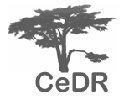


Mind-Body Spaces of Human - Non-human Communication: A Socio-spatial Study of 'Disabled' and 'Non-disabled' Horse-riders
Cheryl Nosworthy, The University of Reading
Abstract
Within disability studies it has been argued that there is a need for studies which suggest a more diverse experience, or which report a positive sense of self and creative involvement in the lives of 'disabled' people (Barnes and Mercer 1996). Horse-riding has a long history as a rehabilitative activity for those with physical and or learning disabilities, for example as a form of exercise, as a learning-teaching medium or simply as a leisure activity. Although geographers have begun to scrutinize the role of pets in human lives (Fox 2006; Nast 2006) there has been a limited amount of work on the links between contact with animals and wellbeing. This paper will discuss work towards a PhD that interrogates interspecies crossings of horses and humans through an empirical study of groups of 'disabled' and 'non-disabled' horse-riders. In particular I look to how riding can be related to a sense of emotional well-being.
Geography has recently been undergoing what Lipman (2006) terms an 'emotional turn'. Broadly speaking emotion has been equated with individual subjective (and in part socially constructed) experiences while affect, has been described as 'properties, competencies [...] of differing texture, temporality, velocity and spatiality, that act on bodies, are produced through bodies and transmitted by bodies' (Lorimer 2008:2). Horses are skilled empaths that rely on picking up the feelings of other members of the herd to survive in the wild. They are also adept at picking up on the feelings of riders that are not publicly displayed as emotions. I have taken a poststructuralist approach to examine how emerging spaces of interaction between horses and humans allow a consideration of the multiplicity of spaces and identities experienced by those with various mind-body differences.
In this paper I document how horse and rider each learn to be affected by the other and question how emotions, feelings and the body are inter-linked in our relationships with horses. Video material (in combination with diaries, interviews and participant observation) is utilized in order to examine embodied expressions of horses in combination with the micro-movements of riders. In the process of learning to be affected by horses, riding provides new dimensions of physical experience, an expansion of sensations and positive moments of embodied pleasure. By focusing on learning to be affected the body is dynamic, it can resonate with others, be put into motion by new entities and register differences in new and unexpected ways (Latour 2000). I suggest that by focusing on the multiplicity of spaces through which the 'body' learns to be affected a more affirmative approach to disability is enabled that looks to what the body can do.